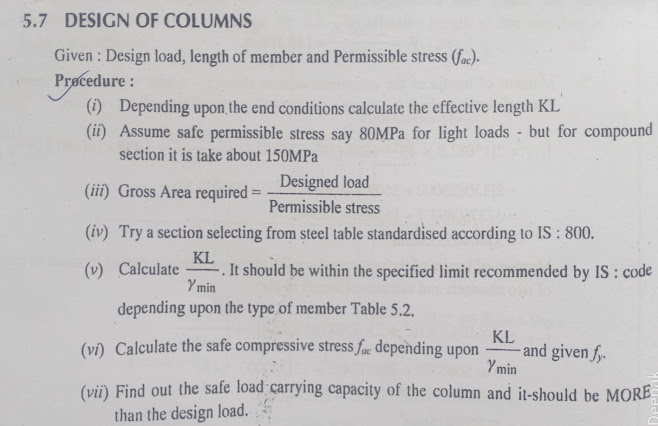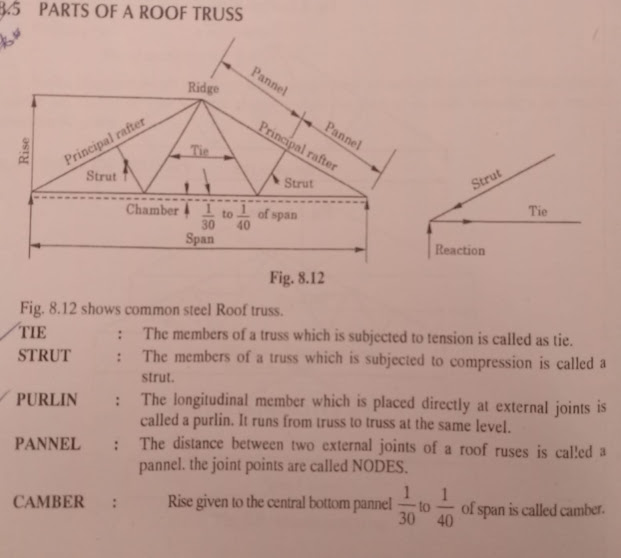Posts
How to get notes on subjects of diploma in civil engineering for third year?
- Get link
- X
- Other Apps
Comparison between Water Carriage method and Conservancy system
- Get link
- X
- Other Apps

The water carriage method and the conservancy system are two different ways of managing sewage and waste water. The water carriage method involves the use of a network of pipes and pumps to transport sewage and waste water to a treatment plant where it is processed and then released into the environment. This is the most common method used in modern cities and towns. The conservancy system, on the other hand, relies on the use of privies, pit latrines, and septic tanks to collect and treat sewage and waste water. This method is typically used in rural areas where a centralized sewage treatment system is not feasible. Both methods have their own set of advantages and disadvantages. The water carriage method is more efficient and effective in treating and disposing of sewage and waste water, but it is also more expensive to install and maintain. The conservancy system is less expensive, but it can lead to environmental pollution if not properly maintained. ...
Methods for Forecasting population
- Get link
- X
- Other Apps
Methods for Forecasting population Methods for Forecasting population, Population Forecasting Methods PDF, Population Forecasting Methods PPT, Arithmetical Increase Method, Geometrical Increase Method, Incremental Increase Method, Simple Graphical Method, Population Forecasting Methods for water demand, Population Forecasting Methods for water Supply system Following are the methods of population forecasts or population projection : 1. Arithmetical Increase Method. This is the most simple method of population forecast. This method is based upon the assumption that the population is increasing at a constant rate. The rate of change of population with time is constant.i.e. dp/dt = C ( a Constant). The population data for the last 4 to 5 decades is obtained and the population increase per decade (x) is calculated; the average of which (X) is then used as the design growth rate for computing future population....
Assumptions in Limit State of collapse in Flexure
- Get link
- X
- Other Apps
Assumptions in Limit State of collapse in Flexure 1. Plane sections normal to the axis remain plane after bending. It means that the strain at any point in the cross-section is proportional to the distance from the neutral axis. 2. The max strain in concrete at the outermost compression fibre is taken as 0.0035 in bending. 3. The relationship between the stress-strain distribution in concrete is assumed to be parabolic. For design purpose, the compressive strength of concrete is assumed to be 0.67 times the characteristic strength of concrete. The partial safety factor = 1.5 shall be applied in addition to this Max Compressive stress in concrete = 0.67Fck / 1.5 4. The tensile strength of the concrete is ignored. 5. The stresses in the reinforcement are taken from the stress-strain curve for the type of steel used. For design purposes, the partial safety factor is equal to 1.15 shall be applied. 6. The max strain in the tension reinforcement in the section at failure shall n...
Difference between Working Stress Method and Limit State Method
- Get link
- X
- Other Apps
Advantages of RCC
- Get link
- X
- Other Apps
Advantages of RCC RCC has following advantages: 1. Strength : RCC has very good strength in tension as well as compression. 2. Durability : RCC Structures are durable if designed and laid properly. They can last up to 100 years. 3. Mouldability : RCC Sections can be given any shape easily by properly designing the formwork. Thus, it is more suitable for architectural requirements. 4. Ductility : The steel reinforcement imparts ductility to RCC Structures. 5. Economy : RCC is cheaper as compared to steel & prestressed concrete.There is an overall economy by using RCC because its maintenance cost is low. 6. Fire Resistance : RCC Structures are more fire resistant than other commonly used construction materials like steel & wood. 7. Permeability : RCC is almost impermeable to moisture. 8. Seismic Resistance : Properly designed RCC Structures are extremely resistant to eart...
Inspection of Welds
- Get link
- X
- Other Apps
Inspection of Welds There are primarily 4 methods of inspecting the welds. 1. Radiography : x-rays are used to locate defects. this method is used in butt welds only. This method cannot be used in fillet method because the structure part will also form part of the projected picture. 2. Ultrasonic Method : In this method ultrasonic wave are sent through the weld. Defects like flaws, blow holes etc affect the time interval of sound wave identifying the defects. 3. Magnetic Particle Method : Iron fillings are evenly spread over the weld and then electric current is passed which creates the magnetic field. The iron powder will be attracted around the cracks of the surface. The iron powder spread forms patterns which are interpreted to locate surface cracks. 4. Dye Penetration Method : By this method depth of crack in weld can be detected. In this case dye is applied over th...
Advantages of Steel as Structural Material
- Get link
- X
- Other Apps
Advantages of Steel as Structural Material 1. Steel members have high strength per unit weight. A steel member of small section which has little weight can withstand heavy loads. 2. Being light, steel member can be conveniently handled. 3. The properties of steel mostly do not change with time, which makes steel most suitable material for a structure. 4. Properly maintained steel structure has long life. 5. Steel structure can be erected at a faster rate. 6. Steel being ductile material, does not fail suddenly. 7. Steel has higher scrap value amongst all building materials.
Theory of Simple Bending Assumptions of Theory of Simple Bending
- Get link
- X
- Other Apps
Steps involved in the design of laterally restrained beam
- Get link
- X
- Other Apps
Steps involved in the design of laterally restrained beam How the laterally supported beam fails? what are laterally restrained beam Following are Steps involved in the design of laterally restrained beam : 1. Calculate the total load . Total load = dead load + live load + snow load ( if there is any) 2. Calculate the max banding moment ( M) & also the max shear force developed (V). 3. Find out the required section modulus Z(x-x). when Z(x-x) = M / F(b) when F(b) = Permissible bending stress assumed = 165 N / mm2. 4. From the steel tables, select a suitable section having modulus Z(x-x) slightly more than required in step 3. 5. Check the steel beam for shear stress and actual shear stress developed should not exceed the permissible shear stress = 100 N /mm2. 6. Check the steel beam for deflection. The max deflection due to applied loads should not be more than Span / 325. If the actual deflection developed is more than the permissible limit, select another section ...
Merits of Bolt Connection over Riveted Connection
- Get link
- X
- Other Apps
Merits of Bolt Connection over Riveted Connection : 1. Bolting is a cold Process as such it is done quickly as compared to Riveted Connection. 2. Bolting Operation is Quicker. 3. There is no noise in bolting operation. 4. Less Manpower is required for Bolted Connection. 5. Bolted Connection is more economical.
Physical Properties of Steel
- Get link
- X
- Other Apps
Physical Properties of Steel Physical Properties of Steel are as follow : 1. Unit Weight of Steel = 78500 N/m3 2. E = Young's Modulus of elasticity = 2 X 10^5 N/mm2 3. G = Modulus of Rigidity = 0.768 X 10^5 N/mm2 4. Coefficient of thermal expansion or contraction = 12 X 10^-6/ deg Celsius 5. Poisson Ration = 0.3



